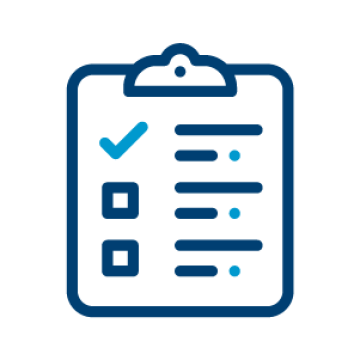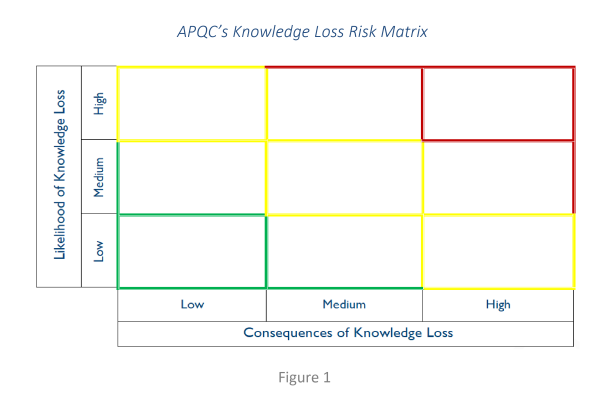Identify & Map Critical Knowledge
After defining your overarching knowledge management (KM) strategy and goals, the next step is to identify the knowledge that is most critical to your organization. Knowledge managers will need to work with business stakeholders to uncover the biggest knowledge gaps, challenges, and opportunities – and then prioritize which to tackle first.

KM Essentials: Introduction to Knowledge Mapping
This collection offers a comprehensive view of knowledge mapping for anyone who wants to learn more about knowledge maps, how to create them, and what they can be used for.
View Collection
Start here...
Questions about knowledge mapping or other KM topics?
Contact APQCInvolve the Business in Identifying Critical Knowledge
When establishing KM priorities, consulting business leaders and others “in the know” to understand your organization’s short- and long-term goals is essential. Business leaders can also help pinpoint areas where impending retirements, internal churn, and other factors are creating knowledge gaps and risks.
Typically busy and not KM experts, business leaders need explicit guidance on how best to convey knowledge needs and rank them by urgency and strategic importance.
Here’s how a couple of leading organizations have done this:
Create a Knowledge Map to Identify At-Risk Knowledge
Once a focus area is established, your KM team will need a system to bring together leaders, experts, and other stakeholders to outline the specific needs, roles, tasks, systems, relationships, and subdomains that the KM effort will target. KM teams use various approaches to uncover knowledge needs, including manager input, knowledge audits, and analysis of existing resources. However, knowledge mapping is the most effective way to gather input and create consensus on what constitutes critical knowledge.
A knowledge map is a visual representation of organizational knowledge and how it is created, shared, and used throughout the enterprise. Knowledge mapping can focus on a process, role, competency or learning need, function, or strategic priority. With this organizing structure as a pivot, the map encompasses both documented knowledge assets and the expertise and know-how stored in employees’ heads.
To create knowledge maps, your KM team will need to work with the business (e.g., subject matter experts, managers, or other stakeholders) to look at each step in a process or area and answer three questions:
- What knowledge is needed?
- Who has that knowledge, or how can it be accessed?
- When is the knowledge needed?
Your KM team can then use this information to understand the movement of knowledge and perform a gap analysis between the current state and the ideal state. The resulting knowledge map will clearly show any discrepancies between how knowledge currently flows and how it should flow.
We use APQC’s KM Capability Assessment Tool as benchmarking resource. It provides us with an indication of how well our program compares to others, and helps us decide where to focus our efforts and align our own strategic plans.
Solicit Feedback from Experts & Experienced Employees
Besides (or even instead of) consulting solely with business leaders, your KM team might want to gather input from experts and experienced employees to understand what knowledge they have as well as potential problems in knowledge access and flow. Some organizations use formal interview processes to extract information from experts and other key personnel prior to retirement or at key milestones (e.g., at the end of major projects). Others use community leaders, process owners, and/or official subject matter experts to identify critical knowledge on an ongoing basis.

Pay Attention to Grassroots Knowledge Needs
Your KM team will also need grassroots channels that allow individuals, teams, and communities to voice their knowledge needs. Your team can encourage employees to self-identify critical knowledge by submitting requests or documents, or it can solicit feedback from employees via surveys.
Here are a couple of examples of how organizations use communities of practice (CoPs) to surface end-user knowledge needs:
- At Accenture, CoPs are explicitly responsible for identifying and filling knowledge gaps. Community champions (subject matter experts) and social learning catalysts (full-time employees responsible for liaising between the KM program and end users) identify gaps and solicit or create content to fill them.
- Praxair uncovers knowledge needs by reviewing questions received through its “ask-an-expert” system, which is integrated with the organization’s CoP. Within each community, a designated member is monitors questions and answers to identify anything that should be codified into formal enterprise content.
- At Nalco Water, after a technical topic appears repeatedly in its community sites, experts will create or update formal content on that topic.
Prioritize Competing Knowledge Needs
After identifying knowledge gaps and needs, you’ll need to decide what to tackle first. Use a simple tool such as APQC’s Knowledge Loss Risk Matrix to prioritize knowledge needs.
Areas with the highest likelihood and consequences of knowledge loss should be the top priority. Knowledge is more likely to be lost if it is not documented and resides only in the minds of one or a handful of employees. Knowledge whose potential loss carries the greatest consequence is vital to the organization’s strategic priorities, products, and/or ongoing operations.

Get Expert Guidance to Optimize Your KM Initiatives
Contact Our Advisory Services DirectorAPQC Advisory Services
You might be in the early stages of developing your organization’s first ever KM program. Or maybe you already have a KM strategy, but need help evolving your KM capabilities. At any stage of your KM strategy implementation, our expert consultants can provide individualized support and customized on-site training to help you accelerate and optimize your KM initiatives.
To learn more, contact our advisory services director:

